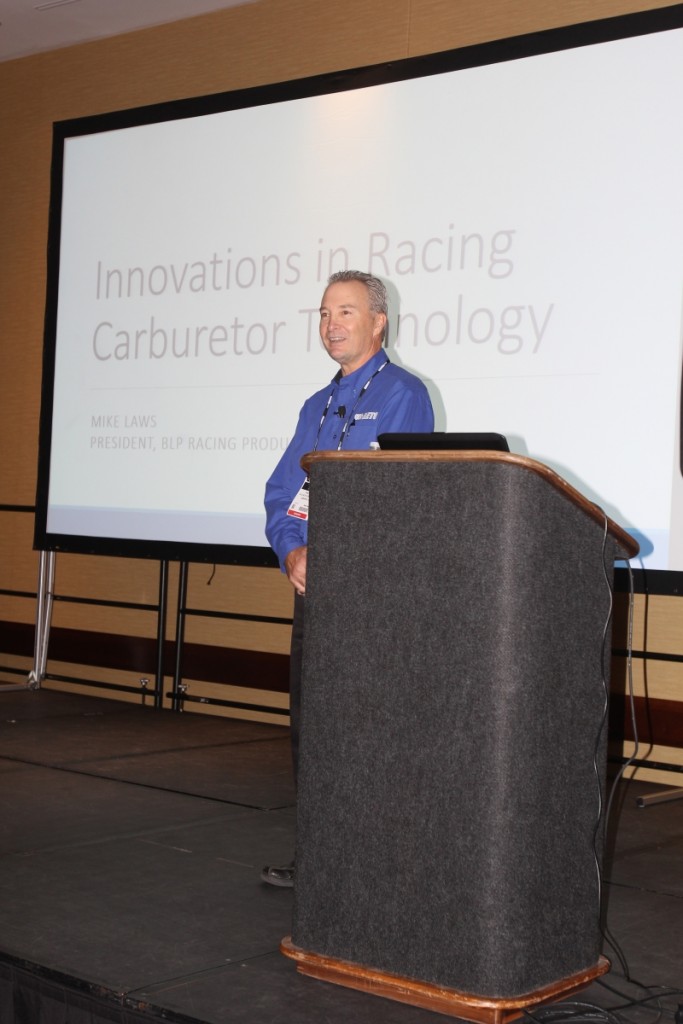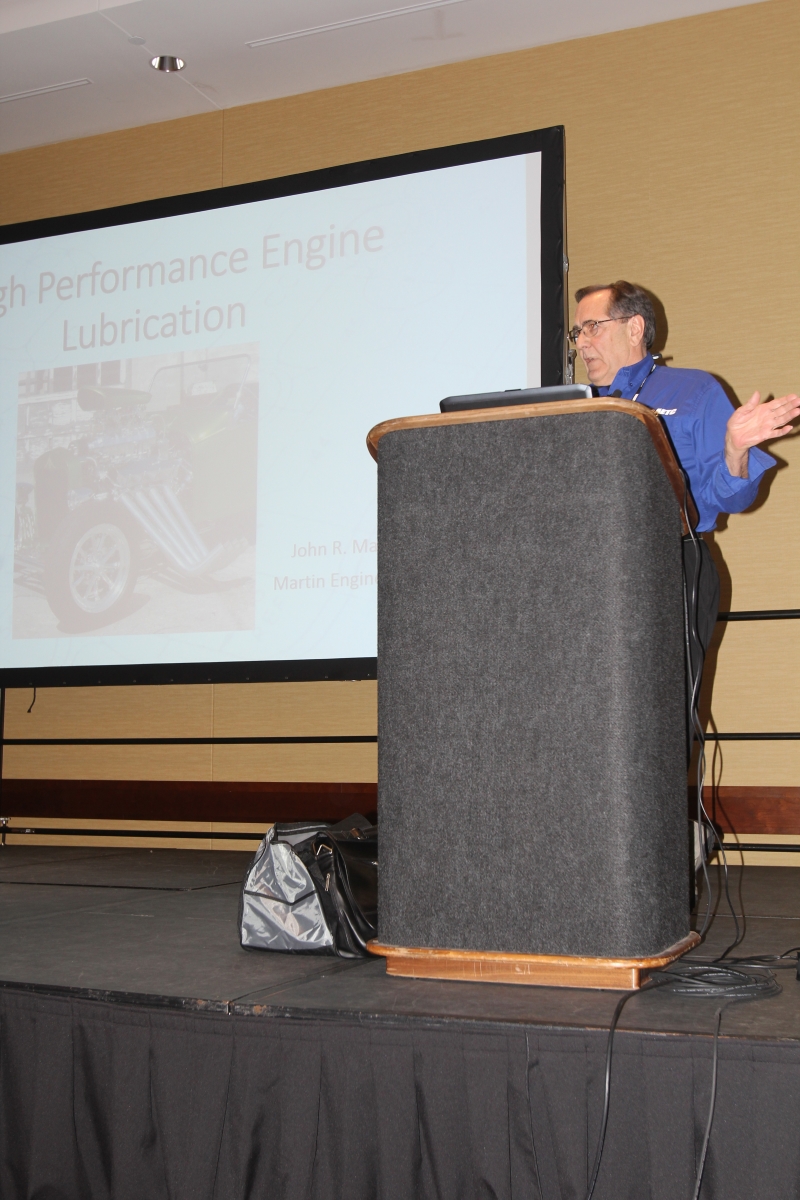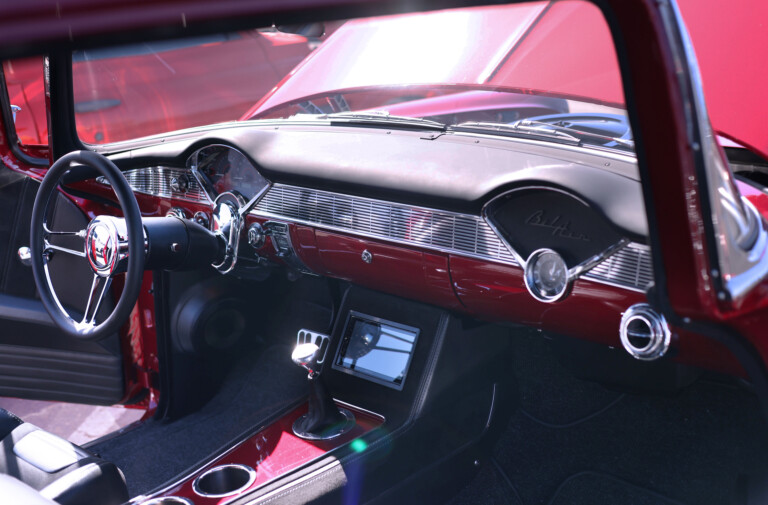The 2015 Advanced Engine Technology Conference
Words And Photos: Jeff Smith
There’s an old proverb that says when you drink the water, take a moment to honor the man who dug the well. The art of building engines and making horsepower is often advanced by sharing knowledge with other enthusiasts, and that’s what the Advanced Engine Technology Conference (AETC) has been doing for more than 25 years.
The conference’s history has included some of the most notable names in the high performance industry and this year’s edition certainly lived up to its reputation as the place to drink from the deep water of knowledge, as well as to honor the men who added to depth of our knowledge.
In recent years, the conference’s two-day session has delivered some great presentations. I personally have attended at least 20, and witnessed dozens of excellent presentations, as well as a few thinly veiled, sales-pitches. This year witnessed the only standing ovation for a presenter in the conference’s long history. We don’t have the space to repeat all the information — at best we can offer only a few highlights.
You might also consider this to be a bit of a tease, which is exactly what it is. The best way to ensure you get all the information is to mark your calendar now for next year’s conference. The AETC takes place in the first week of December, before the Performance Racing Industry (PRI) show in Indianapolis. This year the conference was presented by Motor State Distributing along with Platinum sponsors COMP Cams, Diamond Pistons, E3 Spark Plugs, Federal-Mogul, Fel-Pro Gaskets, SuperFlow, Mahle, PAC Racing Springs, and REV’N TV.
https://youtu.be/69pr4_DRbZY
While engine builder Jon Kaase’s presentation was near the end of the conference, we have to start with his because it was both dramatic and downright amusing.
He began with the buildup of his Engine Masters Vintage class-winning 400c.i. Ford Y-block, offering an insider’s look at how he converted a set of aftermarket Y-block, horizontal intake port aluminum heads into more modern vertical intake ports that resembled a small-block Chevy. This allowed him to use a small-block Chevy tunnel ram to finish off the induction side. There could have been more detail but he quickly shifted gears by saying, “All that is just window dressing, this is what I really wanted to talk about.”
Kaase said he’d been recently baffled by an intake port that he modified where his flow bench had reported a 30 cfm increase. But on the dyno, the change delivered a zero-power increase. This led him to build a large plexiglass tube to replace one intake port in his 521c.i. Hemi Boss9 engine so he could see the reflected wave that theory says bounces back and forth between the closed intake valve and the intake plenum. But vague traces of waves travelling back and forth didn’t really tell him very much.
“I’d read about these waves, but I wanted to know what it felt like inside the port,” Kasse said.
He suspected that studying these waves might lead him to why his port modification failed to perform.
His next video revealed a modification to his plexiglass port using a short, threaded aluminum extension placed perpendicular to the port but it was unclear what the extension was for — until he stuck his index finger into the extension with the engine running! The video then showed his finger wagging rapidly while running the engine on the dyno at WOT!
“I tapped out at 5,200. I didn’t want to stand there anymore,” Kaase said.
A “mystery” volunteer (Kaase would rather not reveal his identity) decided he was man enough to try this. Kaase says “We ran the motor all the way up to 7,000 rpm.”
At one point, his volunteer/victim was wearing a work glove and the port pressure ripped the finger portion right off the glove. Kaase shot some amazing video showing how rapid the pulsing caused the finger movement, indicating the pressure pulses quickly pushing in and out of the intake port.
“It felt like there were just as many pulses running out of the port as there were going in,” Kaase said.
Kaase eventually put a small washer on a small stand in the port to reveal the oscillations and indicate pressure movement, which revealed more about what was really going on inside the port. He also placed a meat thermometer into the port, showing a 93ºF temperature at idle that quickly dropped to 43º at WOT.
At the conclusion of Kaase’s presentation, the entire conference gave him a standing ovation, not just for being crazy enough to stick his finger inside a running engine, but for the effort involved to do all of this work in search of a few answers. It truly was educational — a little scary, and ultimately very funny.

Of course, there were other presentations as well. Mike Laws of Bo Laws Performance (BLP) delivered a wealth of knowledge they’ve learned over the years of carburetor tuning.
But don’t think there wasn’t plenty of good information from the other presenters. The conference began in with its typical format where each presenter speaks for roughly an hour followed by questions from the audience.
Jim McFarland, Don Ward, and Jeremy Worm were first up with information about the performance potential of E3’s spark plug followed by a short discussion by Circle Track magazine’s editor Rob Fisher on the Circle Track Green Racing Initiative (CTGRI). The CTGRI effort was a move to illustrate the advantages and performance potential of combining an LS3-based crate engine with EFI and E85 to produce a green race car.
Much of what the AETC attempts to produce is information not often found in popular media. Bob Dolder, of Sunnen Equipment, offered some insightful information on how engine cylinder bores have for years been assumed round when the reality is that they are not.
On the following day, Rottler’s Steve Bauer gave presentation that included information on what is popularly called the P.A.T. gauge, which offers precise information on the true orientation of a cylinder bore, something that cannot be replicated with a simple dial-bore gauge. The P.A.T. gauge reveals how a cylinder can be significantly distorted and yet still appear to be “square” using standard measurement tools. Dolder also discussed details on using a surface finish tester to measure cylinder bore surface finishes and how Ra (roughness average) ratings can be misleading.
We like to gauge the success of an AETC presentation by how we can immediately apply the information to an engine we are building or tuning. Based on this standard, Bo Laws Products’ Mike Laws’ offering on tuning techniques for Holley carburetors was a home run.
We can’t begin to include all the information that Mike presented, but consider his ideas on fuel management in the float bowl. Laws offered that aerated fuel in the float bowl is essentially “contaminated” and the best way to eliminate the air is to minimize the fuel pressure to levels far below 4 psi. To ensure adequate fuel flow, BLP sells a 0.250-inch needle and seat to replace the Holley 0.110-inch version. Laws also touched on how BLP has created oval throttle plates in an effort to minimize the low-pressure area that is created underneath a typical 4150 Holley carb at WOT. We couldn’t take notes fast enough in this presentation. In our opinion if you are tuning carburetors, this information alone would have been worth the time and money spent on AETC.
Dick Amacher is an engineer with Daido Engine Bearings, a company perhaps not well-known in the performance industry but is the world’s largest manufacturer of bearings and bushings. Amacher offered an excellent example of how Daido reduces edge loading of connecting rod bearings by creating essentially a minor crown in the middle of the bearing that creates a more even load across the entire face of the bearing.
On the heels of that discussion we moved to the latest developments in piston and ring design presented by Mahle’s Bill McKnight. Here, McKnight offered insights into why Mahle combined its SAE 9254 high alloy chrome silicon steel rings with Mahle’s HV385 thermal spray face coating to create a ring that can resist scuffing and yet still offer reduced friction. Combined with Mahle’s latest push toward a 1mm ring that can be used either on the track or on the street and it was obvious there are opportunities for increased power through both reduced friction and improved sealing.
Tom Lieb is the owner of Scat Enterprises and has been building crankshafts for racing and street engines since 1967. He offered an interesting tour through how a billet crankshaft is created, along with some tasty tidbits such as how the fatigue life of a billet and/or forging can be 20 percent better than a typical cast crankshaft. Shifting to the cooling side of the engine, Chris Paulsen of C&R Racing offered information on how a shorter fin height radiator can create more area for cooling tubes and that high flow rates improve cooling when matched with higher cylinder head pressures.

Engine lubrication may not seem like a fascinating subject, but huge changes in current oil technology demands that a good engine builder know his engine oil chemistry. Retired Lubrizol physicist John Martin gave a very animated presentation on engine oil and the effects of ethanol on engine lubricants.
We then shifted to an animated presentation by John Martin on high performance engine lubrication. John recently retired from Lubrizol which is the world’s largest chemical additive company and one that many oil companies rely on for additive packages for motor oil. He went through the latest issues with common off-the-shelf oils and how their zinc and phosphorous (commonly called ZDDP) packages have been cut in order to theoretically increase the lifespan of catalytic converters.
An interesting note was that the majority of this oil that finds its way into the catalytic converter originates with PCV systems rather than the common assumption that the oil escapes around the rings. Another great factoid is that valve spring failures can often be traced to corrosion that form microscopic pits in the metal that eventually fails the spring making anti-corrosion additives in the oil just that much more important.
Concluding the conference was Leonard Warren of Tech Line Coatings, who offered specifics on a broad expanse of different coatings and Scott Shafiroff who discussed useful information on how to turn an engine building into a profitable business.
Likely the topics and technical tidbits included here have created more questions than answers, which is a common result of an AETC conference. From a personal standpoint, the conference has consistently led to several in-depth tech articles. If that sounds like a place you’d like to be, then plan on being at the 2016 AETC. They’ll save you a spot.
The 2016 AETC Conference is scheduled for December 6-7, Indiana Convention Center, Indianapolis, IN.
Source
Advanced Engine Technologies Conference
aetconline.com

















